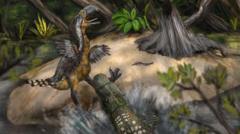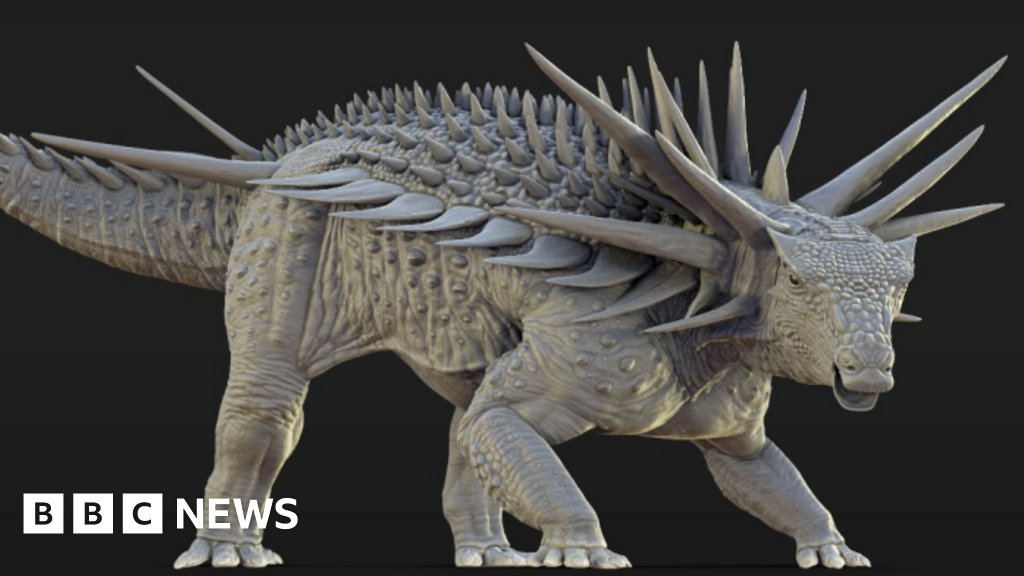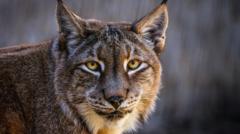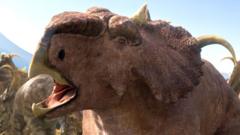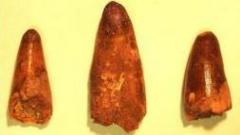In an astonishing revelation from Colombia's Tatacoa Desert, researchers have uncovered that a formidable terror bird, a species towering over many modern predators, was likely killed in an encounter with an even larger caiman 13 million years ago. The leg bone of this avian reptile, identified through distinct teeth marks, provides valuable insights into the ecological interactions of that period.
The science team, led by Andres Link from the Universidad de Los Andes, utilized advanced 3D digital scans to compare the marks found on the bone with those of extinct crocodile-like species housed in museum collections. This analysis, recently published in Biology Letters, not only marks a significant moment in paleontological research but also reveals a rare glimpse of how top predators once interacted.
The terror bird, a striking creature from the Middle Miocene era, stood approximately 2.5 meters tall, utilizing its robust legs and razor-sharp hooked beak to hunt. However, the fossil evidence suggests that this bird met its end during what was likely a violent encounter with a predator known as Purussaurus neivensis, a caiman that could grow up to five meters in length and ambush prey from watery shadows.
While it remains unproven whether the terror bird was already dead when the caiman scavenged its remains, the clarity of the bone's bite marks, which exhibited no signs of healing, strongly implies a fatal attack. This significant finding adds a new dimension to our understanding of predator-prey dynamics during a time when these aggressive species roamed the earth.
The original fossil, unearthed over 15 years ago by local collector César Augusto Perdomo, highlights the rich paleoecology of the Tatacoa Desert, a site abundant with fossils from an era shaped by wetlands and river systems. The collaboration between Perdomo and the scientific community in studying these remnants underscores the importance of citizen science in contributing to our knowledge of prehistoric life.
Dr. Link emphasizes the importance of each fossil fragment, stating, “Every piece of a body helps us to understand so much about life on the planet in the past." Ultimately, these findings illustrate that even the fiercest terror birds faced vulnerabilities, accentuating the complexities of their relationships within the ancient ecosystem.
The science team, led by Andres Link from the Universidad de Los Andes, utilized advanced 3D digital scans to compare the marks found on the bone with those of extinct crocodile-like species housed in museum collections. This analysis, recently published in Biology Letters, not only marks a significant moment in paleontological research but also reveals a rare glimpse of how top predators once interacted.
The terror bird, a striking creature from the Middle Miocene era, stood approximately 2.5 meters tall, utilizing its robust legs and razor-sharp hooked beak to hunt. However, the fossil evidence suggests that this bird met its end during what was likely a violent encounter with a predator known as Purussaurus neivensis, a caiman that could grow up to five meters in length and ambush prey from watery shadows.
While it remains unproven whether the terror bird was already dead when the caiman scavenged its remains, the clarity of the bone's bite marks, which exhibited no signs of healing, strongly implies a fatal attack. This significant finding adds a new dimension to our understanding of predator-prey dynamics during a time when these aggressive species roamed the earth.
The original fossil, unearthed over 15 years ago by local collector César Augusto Perdomo, highlights the rich paleoecology of the Tatacoa Desert, a site abundant with fossils from an era shaped by wetlands and river systems. The collaboration between Perdomo and the scientific community in studying these remnants underscores the importance of citizen science in contributing to our knowledge of prehistoric life.
Dr. Link emphasizes the importance of each fossil fragment, stating, “Every piece of a body helps us to understand so much about life on the planet in the past." Ultimately, these findings illustrate that even the fiercest terror birds faced vulnerabilities, accentuating the complexities of their relationships within the ancient ecosystem.

